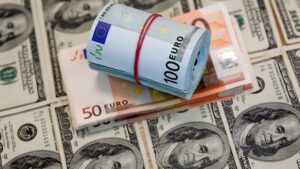
Mining company Ferrexpo plc with major assets in Ukraine is aware of the detention in France of its non-executive director and majority shareholder Konstantin Zhevago, but the company understands that it is caused by matters unrelated to Ferrexpo.
“Ferrexpo’s board of directors is trying to clarify the situation and will inform the market as necessary,” the company said in a statement.
As reported, the detention of Zhevago in French Courchevel for further extradition to Ukraine became known in the afternoon of December 28.
“To date, at the request of investigators of the State Bureau of Investigation (GBI) managed to detain Konstantin Zhevago in Courchevel. You know that he is the subject of several criminal proceedings with the GBI. Now the documents for his extradition are being prepared,” Tetyana Sapyan, the GBI communications adviser, said on the air of the Ukrainian TV marathon.
According to the stock exchange’s website, immediately after the news broke, the shares fell lightning fast by 4.4 pence to 168.5 pence and are now trading at 163.3 pence, about 5.5% lower than before the news of the detention.
Ferrexpo’s share price has dipped as low as 96p in the past 52 weeks amid news of production stoppages due to power supply problems caused by Russian shelling of the energy infrastructure, as well as the general global iron ore market situation.
The company’s shares were also down to 96 p. p. on the news of the production stoppages due to energy supply problems caused by Russian shelling of the energy infrastructure, as well as taking into account the global situation on the iron ore market.

The U.S. dollar is getting cheaper against the euro, the yen and the pound sterling on Thursday amid weak trading activity in the last days of the year.
The calculated ICE index, which shows the dollar’s dynamics against six currencies (euro, Swiss franc, yen, Canadian dollar, pound sterling and Swedish krona), lost 0.15% in trading, while the broader WSJ Dollar Index lost 0.2%.
The ICE Dollar Index, which rose in September to its highest level in 20 years, has since declined 10%. Nevertheless, the index ends 2022 up nearly 9%.
The euro/dollar pair is trading at $1.0623 as of 7:45 a.m. Ksk on Thursday, up from $1.0613 at the close of the previous session. The exchange rate of the pound to the dollar is $1.2041 against $1.2021 the day before.
The U.S. currency went down to 133.73 yen against 134.48 yen at the previous trading session.
The situation in China remains in the focus of traders. The optimism caused by expectations of increased business activity in China after the lifting of the quarantine restrictions was replaced with fears of a new wave of COVID-19 disease in the world.
Earlier Beijing declared about its intention to soften the epidemiological requirements for those arriving to the country since January 8. In addition, the Chinese authorities will resume issuing documents for tourists wishing to travel abroad. The U.S. and Italy have already announced additional requirements for passengers arriving from China.
The exchange rate of the dollar paired with the yuan dropped to 6.9721 yuan/$1 in trading on Thursday from 6.9787 yuan/$1 the day before.

Oil prices continue to decline on Thursday with weak trading activity in the last days of the year.
Investors’ optimism connected with expectations of increase of demand for oil after lifting of quarantine restrictions in China was replaced with concerns of new wave of COVID-19 disease in the world.
Earlier Beijing announced its intention to soften the epidemiological requirements for those arriving in the country from January 8. In addition, the Chinese authorities will resume issuing documents for tourists wishing to travel abroad. The U.S. and Italy have already announced additional requirements for passengers arriving from China.
The cost of February futures on Brent oil at London’s ICE Futures Exchange was $83.14 per barrel by 7:15 a.m. KSC on Thursday, down $0.12 (0.14%) from the close of the previous session. Those contracts fell $1.07 (1.3%) to $83.26 a barrel at the close of trading on Wednesday.
The price of WTI futures for February at electronic trades of NYMEX fell by $0.28 (0.35%) by that time to $78.68 per barrel. By the close of previous trading, those contracts had fallen $0.57 (0.7%) to $78.96 a barrel.
“China’s rejection of travel restrictions could trigger a new global wave of COVID-19,” said John Driscoll, director of JTD Energy Services Pte. in Singapore, cited by Bloomberg. – This, in turn, may weaken the demand for oil and lead to lower prices.
On Thursday, traders will focus on the U.S. energy inventory data for the previous week to be published by the country’s Department of Energy at 19:00 MSK.
The American Petroleum Institute (API) report showed that U.S. oil inventories fell by 1.3 million barrels in the week ended December 23, after falling by 3.07 million barrels a week earlier.

Ukrainian producers in December 2022 got the right to export poultry and poultry products to Canada and fish products to Turkey, the website of the State Service of Ukraine for Food Safety and Consumer Protection (Derzhsprodpotrebbezopasluzhba) said on Wednesday.
According to her, the new markets for business are open thanks to the joint work of the department, the Ukrainian Ministry of Foreign Affairs and foreign embassies.
The relevant work to open the Canadian market for Ukrainian poultry meat and meat products began back in 2019, when representatives of the Canadian certification body CFIA conducted an inspection of the state production control system at Ukrainian enterprises. A list of Ukrainian companies that are now allowed to export poultry meat and poultry products to Canada has been added to the CFIA database, and requirements for importing meat products from Ukraine to Canada have been published on the organization’s official web portal.
According to the Service, in December Ukraine also received the right to export fish products to Turkey for export. The form of the relevant certificate has already been posted on the official web portal of the State Service of Ukraine for the Protection of Consumer Rights.
As reported, during the martial law in Ukraine has increased the number of enterprises-producers of products of animal origin, which have the right to export their products to the European Union. Their number increased by 33 (or 8.5%) compared with winter 2021 – up to 418 from 385. The number of Ukrainian exporters of dairy products increased the most – by 11, fish products – by six, snails and products from them – by five.

The demand for the purchase of houses in the suburbs of the capital will increase in the first half of 2023.
This forecast in a comment to “Interfax-Ukraine” gave the developer of the cottage town “Park House” Rudolf Arzumanyan.
“The demand for houses will increase in anticipation of summer. This will also be facilitated by the new air defense systems, which will close, we hope, in the near future, the sky over the capital region,” Arzumanyan said.
He added that the suburban real estate market of Kiev region since the beginning of the war went through several stages. In the spring there was a surge in demand for rent, including at the expense of displaced people, then there was a demand to buy.
“In general, if anyone had finished houses with renovations, they all sold them or rented them out long-term. People with money understand that it is possible to provide more or less comfortable and predictable conditions of stay only in a private house due to autonomous heating, gas, firewood, electricity, autonomous water supply and sewage,” explained Arzumanyan.
According to him, developers of suburban real estate provided autonomous power supply through generators and high capacity batteries such as SOUOP, ECOFLOW, etc. During the year, however, there was not as much new facility commissioning as the market demanded.
“New facilities are not being commissioned because of a shortage of handymen and problems with materials. Another retarding factor is the imbalance. Prices have gone up for almost everything, but not for real estate. Thus, the market froze,” he said.
Another trend: there were virtually no investment deals during 2022.
“Rental prices in dollars have fallen by half, people are afraid to invest money. In fact, the demand to buy fell by 80% compared to last year,” said Arzumanyan.

The Ukrainian real estate market is unbalanced, amid low demand and declining new supply, reported prices from developers are growing, while rental prices are falling, according to the National Bank of Ukraine (NBU) Financial Stability Report for December 2022.
It notes that demand for housing remains weak and unstable: the interest of few buyers depends on the intensity of the shelling of settlements and decreased again in the fourth quarter.
The existing demand is focused primarily on ready-made housing for residence, almost zero speculative for the purpose of further resale or lease.
The number of new buildings under construction is slowly increasing after an almost complete standstill in the first months of the war. In the country as a whole, work has resumed on more than two-thirds of sites, mostly in housing complexes in the final stages of construction. At other sites the resumption of work has occurred only on paper.
According to the State Statistics Committee of Ukraine, for the three quarters of 2022 completed construction of 2.8 million square meters. m multifamily housing. As noted in the report, this is half the record for the same period in 2021 and only a quarter less than the average of the previous five years.
Much worse is the situation with the start of new projects. In the first nine months of this year, developers received permits to build half as many multifamily units as the average for the same period of the previous four years. However, obtaining permission is not an indication of the start of construction – the actual start of construction work can be delayed for a long period.
The report also reminds us that, according to the “Russia Will Pay” project, more than 16,000 apartment buildings and almost 127,000 private homes have been destroyed or damaged since the start of the full-scale war until November.
The low activity of the primary real estate market, together with the significant amount of housing damaged by the shelling, will lead to a reduction in the supply of housing in the near future, and in the future to a possible shortage of housing. At the same time, the declared purchase prices are mainly increasing, while the rental prices remain almost twice as low as before the war.
The report states that the multidirectional price movements reflect an imbalance in the real estate market, relatively cheap rents will deter demand for the purchase of housing.
The price-to-rent ratio has risen substantially since March and is now at an all-time high. In terms of price, renting seems to be a better alternative than buying, and this situation will persist for a long time.